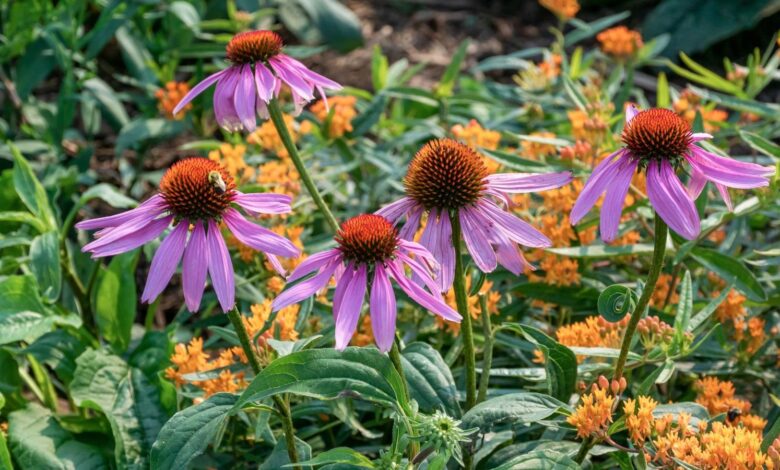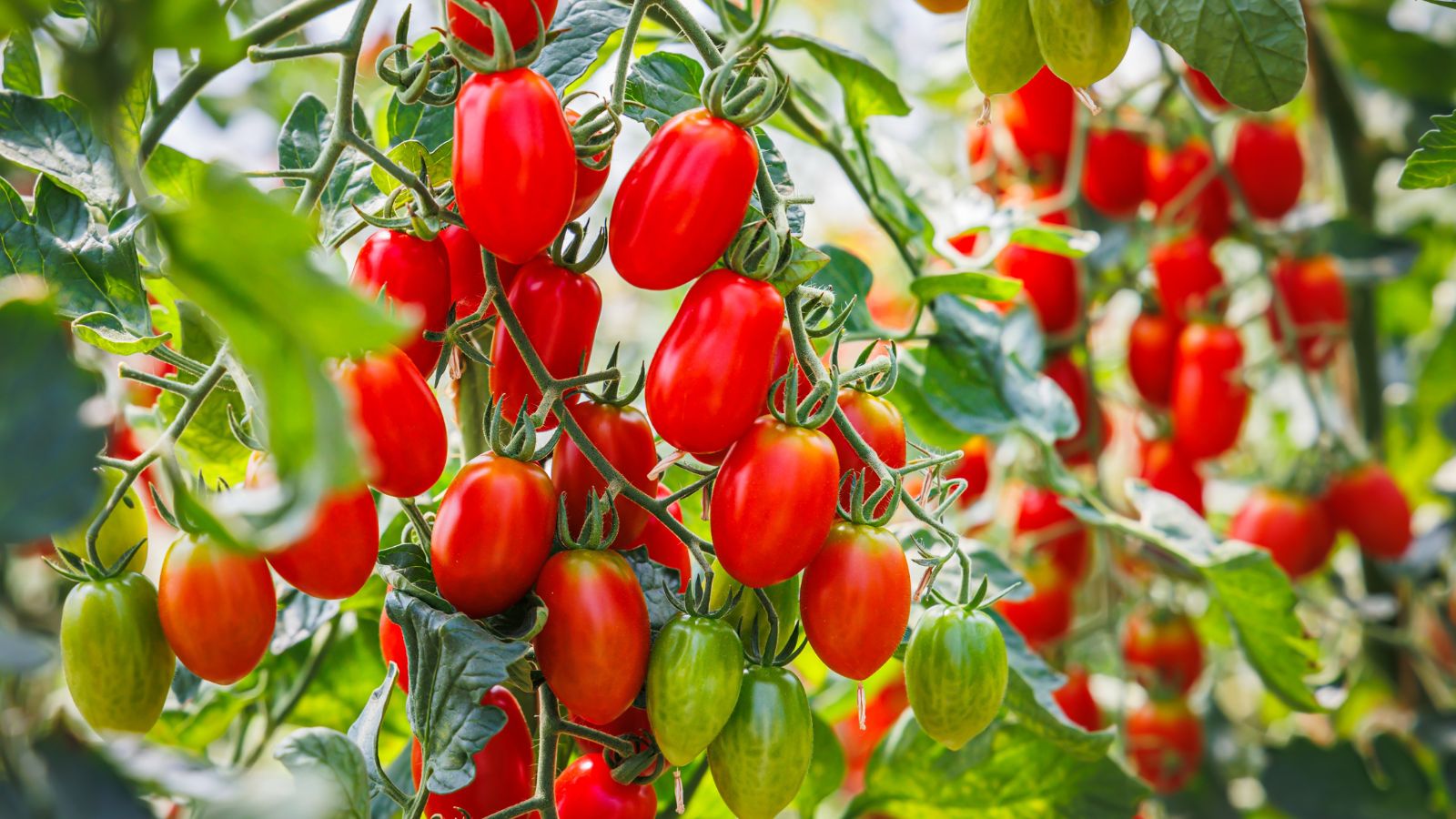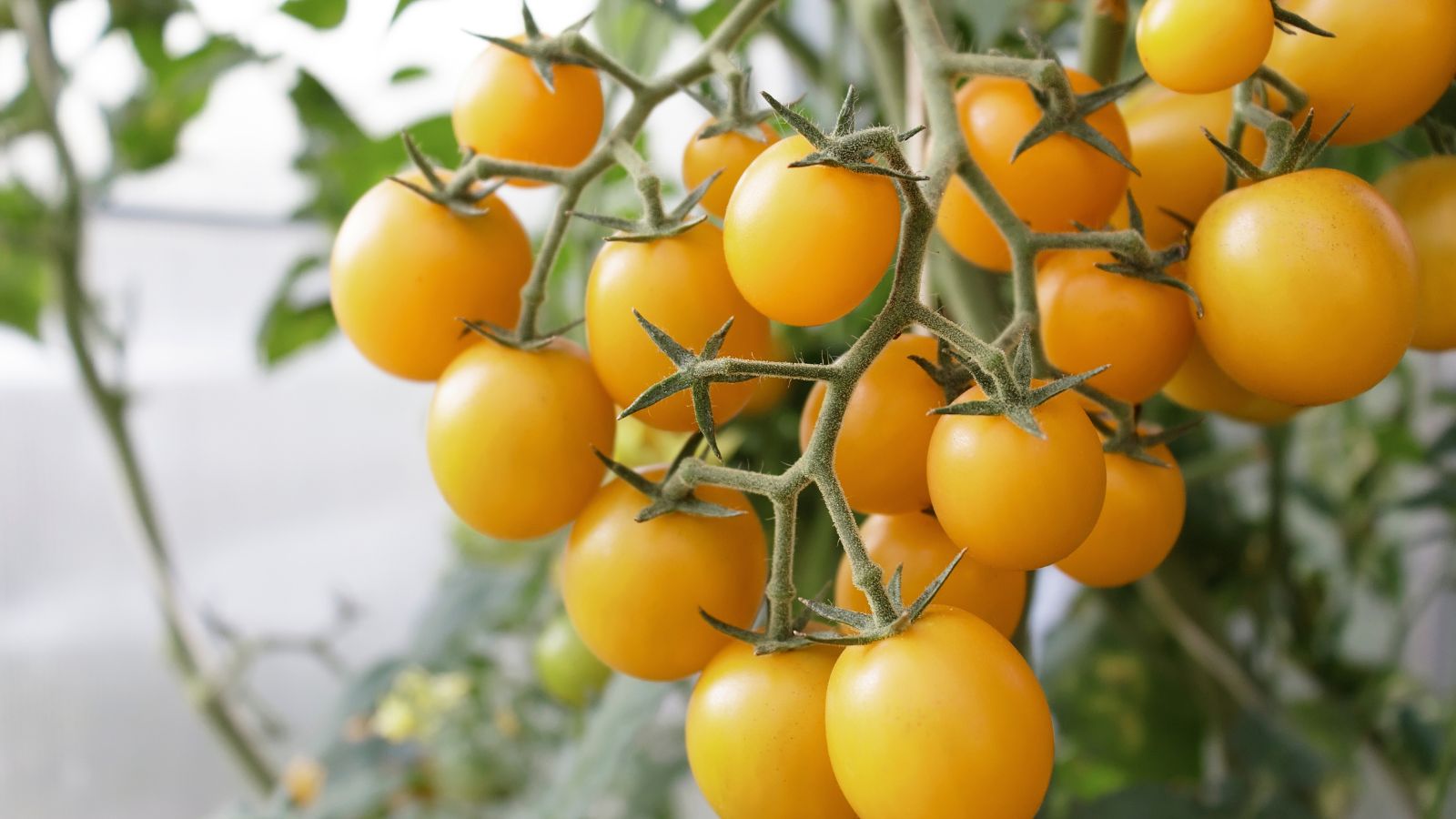17 Low-Maintenance Native Plants to Grow This Season

If you are searching for plants that you can grow this season without having to worry about much maintenance, natives are the way to go! Because they are adapted to thrive in your specific climate, native plants generally require less tending. They are typically content with the weather, soil, and conditions of your region.
There are several considerations to keep in mind when selecting natives for your garden. Not every plant that is native to your region is well-suited for your landscape. If you have sandy soil, avoid planting plants that prefer boggy conditions, and vice versa.
I’d love to tell you about some wonderfully easy native plants that you can grow in your garden this year, many of which are perennial and will return year after year. We will discuss the terrain they prefer, as well as the regions where you will find them, naturally.
Let’s dig in!
Purple Coneflower Echinacea


Purple Coneflower Echinacea Seeds
Black-Eyed Susan


Common Milkweed / Butterfly Flower


Common Milkweed / Butterfly Flower Seeds
Purple Coneflower


Purple coneflower is native to most of the central and eastern United States. From Texas to Florida, north to Maine, and West to Colorado, you’ll find this plant in meadows, prairies, and open woodlands. It thrives in well-draining soil and isn’t picky about nutrients; it handles poor soil just fine.
You’ll love the bright, showy flowers, and so will the pollinators, bees, and butterflies love these blooms. They have a large, orange, spiky cone in the center surrounded by gorgeous purple ray petals. They look great in the garden and make lovely cut flowers as well. They’re perennial and spread slowly, making them relatively easy to manage.
Black-Eyed Susan


Black-eyed Susans are native to most of the United States, except for Nevada and Arizona. The plants are biennial or short-lived perennial, but I find that they re-seed bountifully. Once you have them in the garden, you’ll always have the option. They are also easy to remove if they become too much.
Depending on your region, these can bloom anytime from early summer to mid-fall. Mine starts to bloom in early June here in Zone 9. They may occasionally battle powdery mildew, but they aren’t attractive to pests. Pollinators, on the other hand, adore them. They are incredibly easy-going.
Common Milkweed


There are about 100 species of milkweed native to the United States, which are essential keystone plants. Milkweeds are the sole larval food for Monarch butterfly larvae. Common milkweed is native to the eastern and central U.S., but on the West Coast, you can plant showy milkweed or several other types.
Milkweed is easy to care for. It establishes quickly and produces pretty umbels of tiny blossoms through most of the summer and into the fall. It spreads by reseeding and rhizomes, so prepare to see it popping up in other places next year. It’s a fantastic choice for the pollinator garden.
American Beautyberry


American beautyberry is ideal for spaces where you want a shrub that requires minimal maintenance throughout the growing season. In late spring, it produces clusters of tiny pink flowers which give way to brilliant purple berries near the end of the season. These persist through the fall and provide food for birds if you leave them on the bush.
This is a deciduous shrub that turns yellow in autumn and loses its foliage. You can leave it alone or prune it as you prefer, if you want to keep it compact. It’s not particular about exposure or soil, tolerating a range of conditions, including clay, sand, loam, and chalk. Once established, it’s exceptionally drought-tolerant in partial shade.
Cardinal Flower


Cardinal flower resembles salvia, and it’s ideal for spaces where you want bright, showy flowers without requiring a lot of effort. The tall flower spikes bloom in late summer, attracting tons of butterflies and hummingbirds. It’s native to all of the contiguous United States except for the Northwest.
As a winner of the Award of Garden Merit from the Royal Horticultural Society, cardinal flower has many qualities. It prefers rich, moist soil, so avoid planting it in areas where drought-tolerant plants are necessary. It is pest- and disease-resistant, though, and requires little attention other than occasional watering during droughts.
Wild Bergamot


Wild bergamot is native to most of North America. You won’t find it in the wild in California, Florida, Alaska, or Hawaii, but everywhere else, it’s a nice little native to grow. Its natural habitat is primarily prairie landscapes, and it doesn’t mind poor soil and brief periods of dry weather.
The pretty purple flowers bloom from mid-summer into the fall months, and pollinators adore them. Wild bergamot is not picky about soil, and self-seeds readily. This perennial will colonize if you allow it to, so give it some space to spread out, and you’ll love the results!
New England Aster


You’ll find New England aster growing in the Northeast, Central, and West Coast of the U.S. It prefers open prairie and meadow habitats with moist soil. It grows nicely near streams and other bodies of water. It can tolerate drier conditions, but it prefers consistent moisture.
The pretty purple flowers bloom in late summer and early fall, attracting bees and butterflies with a bounty of nectar. They make lovely cut flowers and are tolerant of various soil types, as long as they retain some moisture. Deadhead the flowers if you prefer for it to stay in one place. It clumps and performs best when divided every two to three years.
Anise Hyssop


This pretty pollinator favorite is native to the northern central United States, where it prefers prairies, plains, and dry upland forest areas. It’s not native where I live, but I grow it every year because the bees adore it and it’s incredibly easy to maintain. It likes well-drained soil and performs better in clay than many plants do.
Anise hyssop is not a true anise, but it has a similar scent. This aromatic plant is actually a member of the mint family. It has a shrubby shape and produces fluffy, purple flower spikes throughout a long season, lasting from summer to most of fall. Bumblebees love this one.
Coral Honeysuckle


Coral honeysuckle is a native flowering vine that takes little to no attention and is very attractive to hummingbirds. It’s semi-evergreen and native to all of the eastern and central United States. It’s not particular about soil and tolerates a range of exposure types, but blooms best with full exposure.
This climber looks excellent on a trellis, fence, or arbor. It blooms in spring, summer, and fall, making it attractive throughout most seasons, especially in warmer climates where it remains evergreen. Moist, well-drained soil is best; it is tolerant of clay and sand.
Tall Goldenrod


Tall goldenrod is native to most of the contiguous United States except for a few states in the Northwest. It likes moist, slightly acidic soil and can handle some shade. It even tolerates a bit of flooding if necessary. You’ll live this in a cottage garden or meadow setting.
The tall leafy stems look pretty throughout the summer, but it’s autumn when they shine. Large, fringelike panicles of bright yellow flowers are incredibly appealing to bees and other pollinators. If you leave it to go to seed, the wind will spread this native plant throughout the area. It’s a beautiful background plant.
Tuberous Grass Pink


Tuberous grass pinks are one of the few native orchids, and they grow naturally throughout the eastern and central United States. The lovely orchid-pink blooms open in spring and summer, and reseed nicely.
This is a bog plant, so it needs moist soil. It’s low-maintenance as long as you plant it in the right spot. It has few pest and disease issues and looks great in a bog garden or wet meadow.
Golden Tickseed


There are several species of native coreopsis, commonly known as tickseed, in the United States. Golden tickseed grows in the eastern United States and across the southern states. It works well in urban settings and is highly versatile overall.
You can leave this native plant to its own devices, but it will bloom more if you shear off the first flush of flowers in the summer. Pollinators love it, and deer won’t bother it. Here in zone 9, it’s evergreen, while elsewhere it’s semi-evergreen or a deciduous perennial.
Blue Sage


Blue sage is one of the many types of salvia native to North America. This species is found in the Southeast, central, and midwestern states, primarily in prairies and open woodland habitats.
This salvia is a great pollinator attractor. It’s not picky about its environment, and will grow up to five feet tall under ideal conditions. It’s excellent for preventing erosion, and will naturalize if you want it to spread to a larger space.
Woodland Phlox


You’ll find woodland phlox growing native in the eastern and central portions of the country. It is a semi-evergreen, mat-forming species that makes a lovely groundcover in partially shaded areas. The small flowers are sweetly scented and come in blue, pink, and white.
Woodland phlox is another winner of the Award of Garden Merit from the RHS. It likes rich, moist soil and tolerates clay. It’s drought-tolerant once established. Rabbits may nibble on your phlox, but deer won’t bother with it.
California Poppy


It’s named for California, but the California poppy is native to quite a significant portion of the United States. In fact, there are only a handful of states where this flower doesn’t grow in the wild. You may know it from the vast, rolling hills of orange blooms that are photographed often along the Pacific coast.
Well-drained, sandy soil is the best type for California poppies. It blooms well even in arid climates. It’s also heat- and salt-tolerant, making it ideal for coastal gardens.
Pacific Aster


For residents of the Pacific Northwest, Pacific aster is a lovely little native plant that provides a large amount of food for pollinators and re-seeds bountifully. The sweet, blue-violet flowers bloom in summer and fall. When it comes to being low-maintenance and versatile, this plant has it in spades.
Pacific aster is happy in most soil types. It’s salt and drought-tolerant, and also tolerates some shade. Once established, you’ll rarely need to water it. It’s a host plant for crescent and checkerspot butterflies.
Firecracker Penstemon


Finally, firecracker penstemon is native to a smaller region in the southwestern United States, where it thrives in an incredibly diverse range of conditions. It’s fine with sun or partial shade, and doesn’t mind rocky or sandy soil. It’s quite drought-tolerant once established.
For waterwise gardens and desert areas, firecracker penstemon is perfect. It’s popular with pollinators and has no significant pest or disease issues. Expect flowers in spring and summer, and enjoy the brilliant red blooms for a long season.





